Why our food supply chain is flawed, and these champions’ efforts to stop the waste
BY DERRICK A PAULO, RUTH SMALLEY AND CHRISTY YIP FIRST PUBLISHED IN CNA, 15 APR 2021
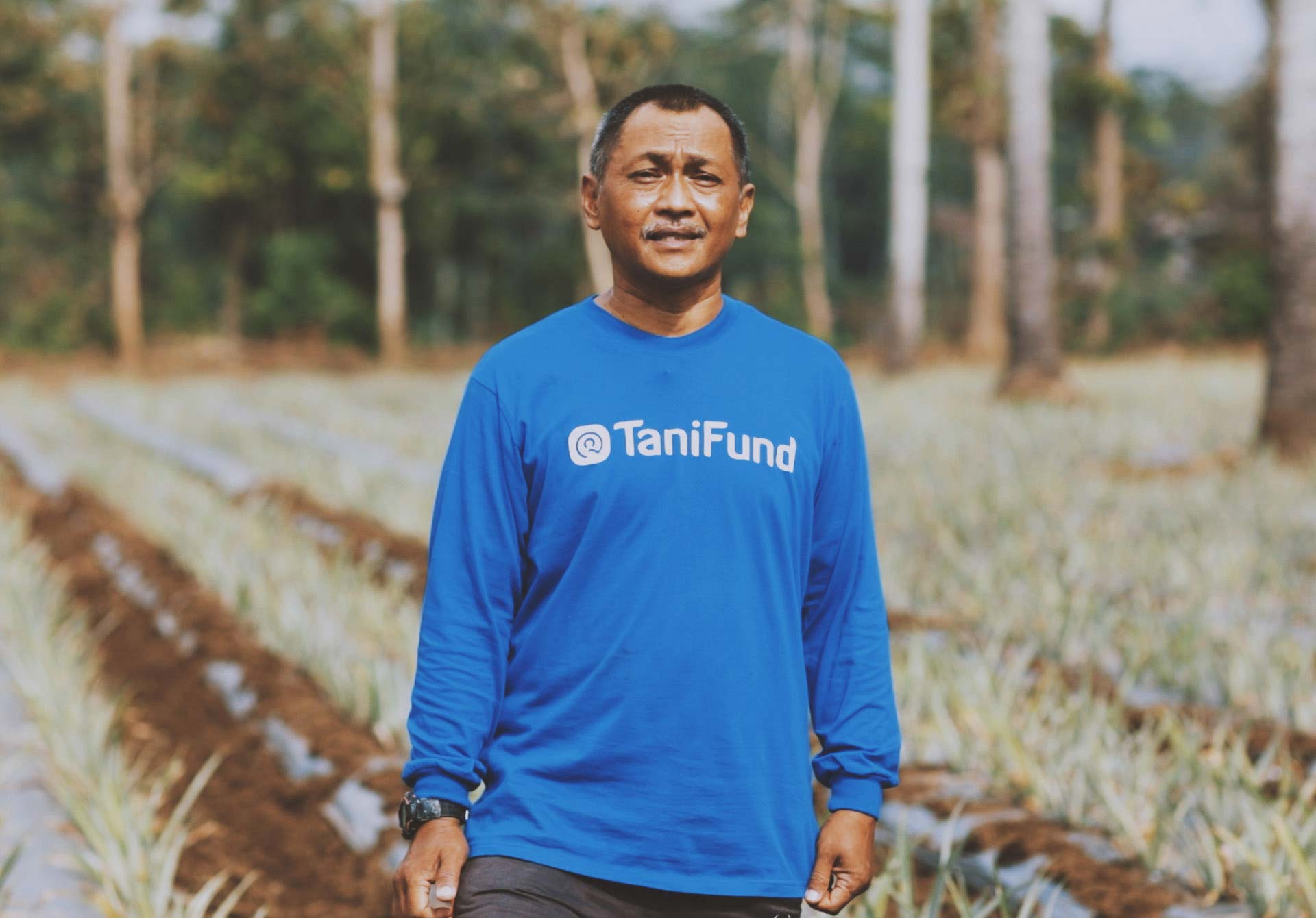
It is a battle for produce in countries like India and Indonesia to reach consumers. Up to 40 per cent of food in Asia is lost post-harvest during handling and storage. In the second instalment of a three-part series, CNA Insider, in partnership with DBS, delves into the solutions that can have a marked impact.
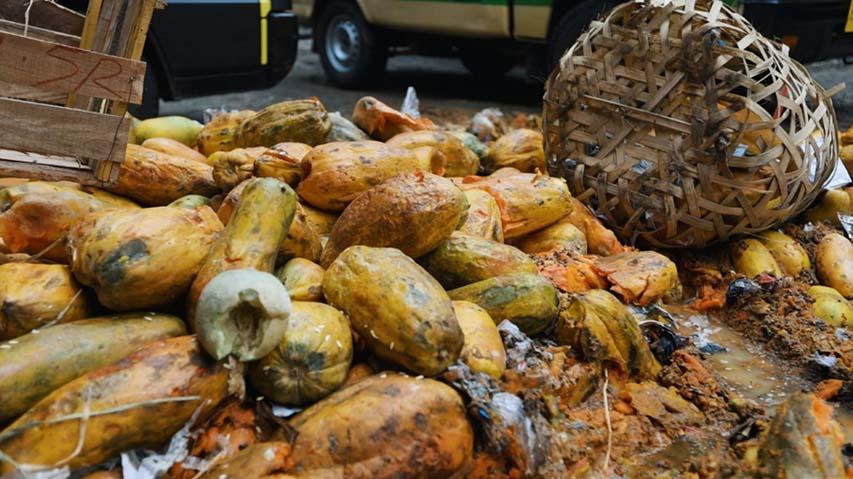
Food wastage occurring outside a wholesale market in Indonesia.
MUMBAI and JAKARTA: Singapore had a taste of it during the “circuit breaker” — when egg distributors were throwing away eggs amid an oversupply, with imports up while demand fell.
One merchant discarded as many as 250,000 eggs after they went bad in storage. Worldwide, many more eggs were smashed, vegetables and fruits were destroyed and milk dumped.
It is one thing, however, to have it happen in a place like Singapore, ranked number one in the Global Food Security Index; it is another to dump food in countries struggling to combat hunger, malnutrition and poverty.
But the latter happens every day because of flaws in the global food supply chain, even before COVID-19.
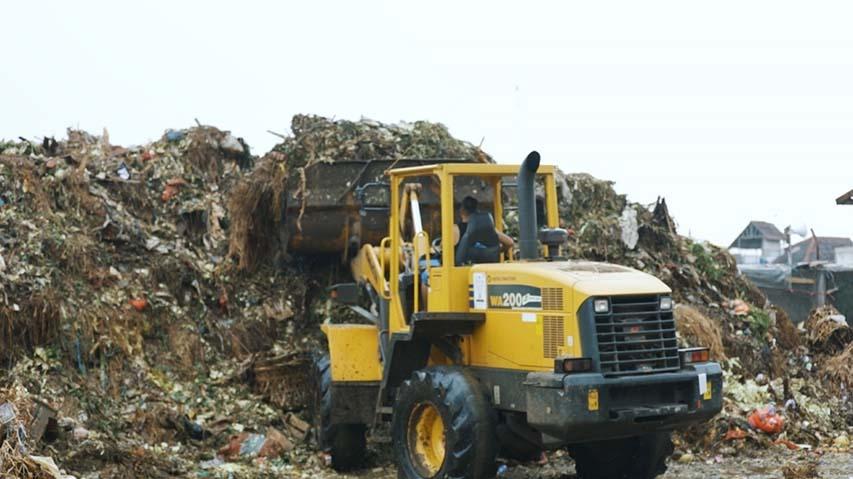
The wrong destination for food: A landfill.
In Asia, up to 40 per cent of food is lost after harvesting, during handling and storage — never making it to the shops at all.
That is what is happening in India, home to a third of the world’s malnourished children. Indian authorities have estimated that close to 60 million tonnes of grains, fruits and vegetables are lost out of total annual production.
“It means that every week, every family in India could be gifted with 5kg of fruit and vegetables ... if we save these losses,” said Vaibhav Tidke, the 34-year-old chief executive officer of food preservation company S4S Technologies.
In Indonesia, one of Singapore’s main partner countries for food imports, there are also food losses of up to 40 per cent due to inefficiencies in the supply chain, noted I Made Supartha Utama, a professor from Udayana University.
WATCH: Why so much food is lost in the supply chain
As CNA Insider finds out, it is an uphill battle for fresh produce in these countries to reach consumers. But there are solutions too, and what is being to stop the food waste could help farmers in the process.
WHEN THE RAINS COME
One of the biggest problems faced by players in India’s food supply chain is the country’s erratic weather. In 2019, for example, it “rained extensively”, pointed out onion wholesaler Abdul Rahman Shaikh.
It is not an uncommon issue — traders in Singapore and Malaysia have recently lost vegetable supplies amid the rainy season.
But India is particularly vulnerable because farmers do not have proper storage facilities. Sometimes they even use road surfaces to dry their produce.
Neither is there adequate infrastructure such as refrigeration during the long market routes across rural India, nor at the distribution or wholesale centres.
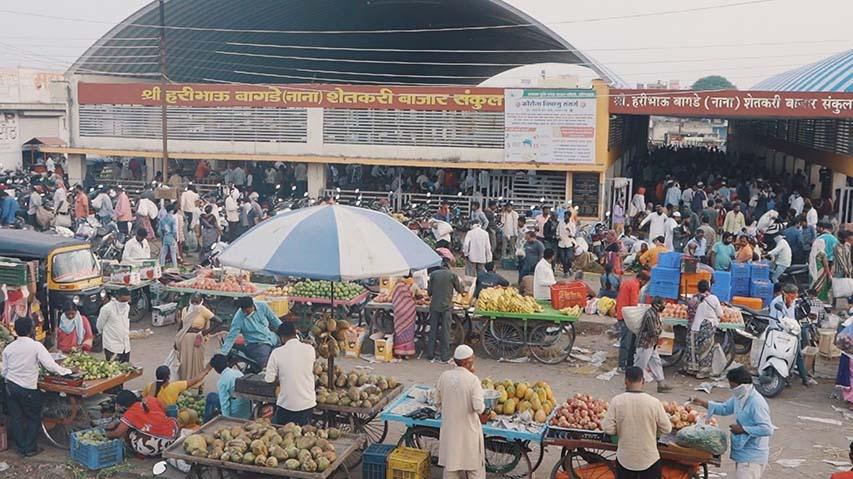
A wholesale market in India.
“In (the case of) potato, if water touches it … it rots after two days or three days. It reduces the shelf life of the produce,” cited Sanjeev Maniyal, an onion and potato wholesaler in Mumbai.
“Generally, within 24 hours (or) the same day, we (have to) sell it … Keeping (produce) in cold storage or storerooms isn’t advisable because the electricity (charges) are high here.”
Tonnes of produce, especially staples like onions, end up rotting. “Quite often … the stock is damaged and can’t be used,” said Abdul Rahman. “There’s no other way but to throw it away.”
During the rainy seasons in Indonesia, food loss also increases by 10 to 20 per cent, according to Muhammad Firdaus, a professor from Institut Pertanian Bogor (IPB) University.
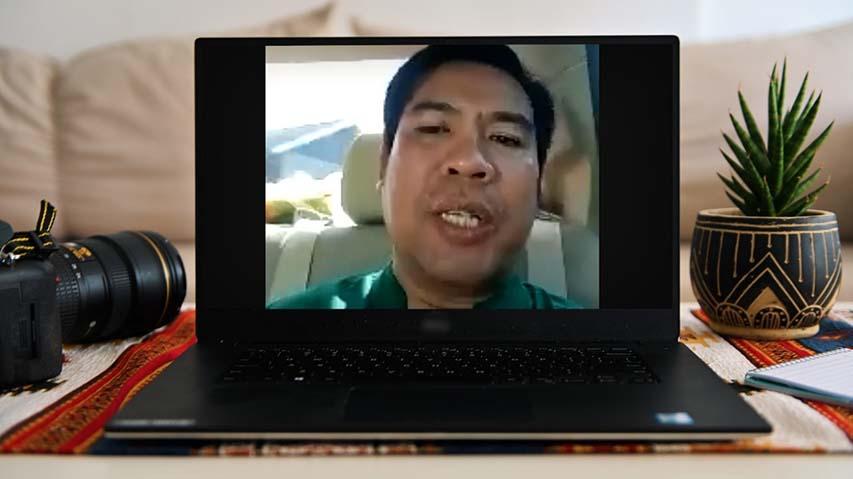
Professor Muhammad Firdaus.
“(The farmers) have very bad packaging … to protect the fruits, to protect the staples, and (the rain) damages the products,” he said.
And with climate change, there is now the threat of more unseasonable weather in more countries.
SCIENCE FOR SOCIETY
But what if food loss could be prevented right after harvesting?
That question led seven university friends in Mumbai to start S4S (Science for Society) Technologies as a social enterprise in 2013. And they have a simple but effective solution to food spoilage: Solar conduction dryers.
“We’re taking out the moisture from (perishables). And because of that, it gives them an extended shelf life of one year (without chemicals),” said co-founder Tushar Gaware, 37.
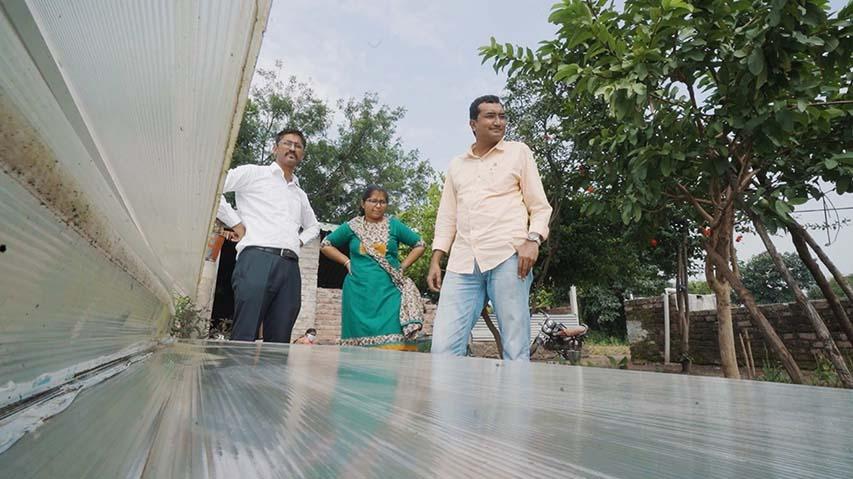
Three of the S4S founders in front of their solar dehydrator.
Their patented, United Nations award-winning technology dehydrates a range of produce, like onions, turmeric, ginger, garlic and potatoes, which S4S buys up from farmers and sends for processing in villages nearby.
They even take lower-grade produce, the type that middlemen reject.
“What we’re proposing to farmers (is) you take out something that goes as waste, which is good food but which cannot be sustained during the entire logistics from farmer to consumer,” said Tidke.
“(We) do the processing so that (they) get a good rate.”
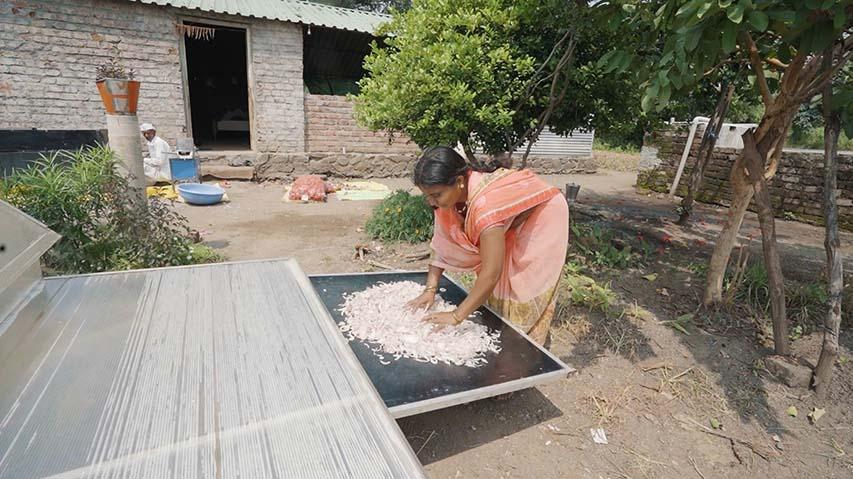
Onion processor Sunita Dyaneshwar loading onion slices onto the S4S solar dehydrator.
S4S sends its dehydrated products to India’s National Institute of Nutrition for testing, and the data shows that “almost 90 to 95 per cent” of the nutrients are retained, said Gaware.
“The nutrition (is) one of the highest in the globe,” said Tidke. “It makes the product as good as the fresh product.”
The dried fruits and vegetables are finally sorted, graded and packed at S4S’ factory in Aurangabad, Maharashtra, before they are sold.
“That material is rightly packed so that there’s no moisture that goes in, and then the freshness remains intact during the entire processing,” added Tidke.
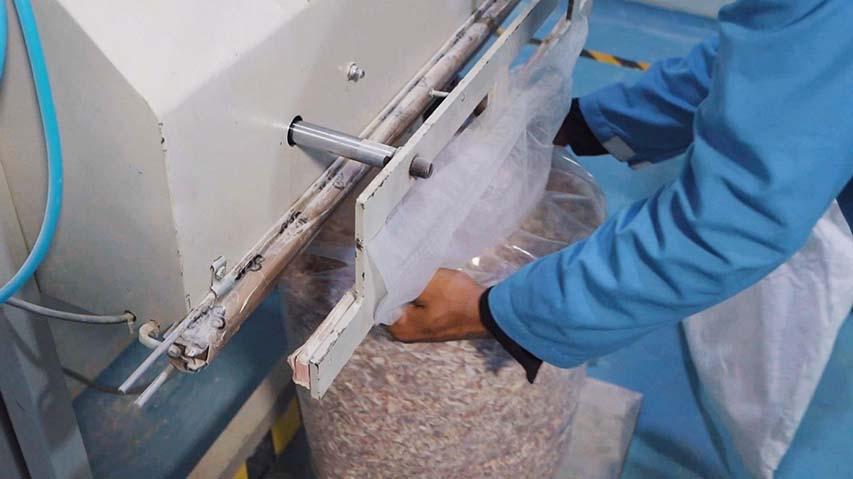
S4S Technologies' packaging for sliced onions is made from an oxygen- and moisture-proof polymer.
The products go to more than 700 industry customers, including Nestle, Indian Railways, hotels and restaurants across the country. For restaurant owner Naresh Shetty in Mumbai, it means there is no longer the wastage of the past when he orders onions.
“Mostly, the lower part of the (onions) got totally rotten,” he said. “It affected the revenue of the restaurant.”
Initially, however, he was not convinced S4S’ dehydrated onions would be the answer; he was concerned that his regulars would tell the difference in his gravy. But they did not.
“My chef tasted it, my staff tasted it, everyone said it was good,” he said.
S4S believes that its model of reducing food loss is also good enough for the rest of the farming world.
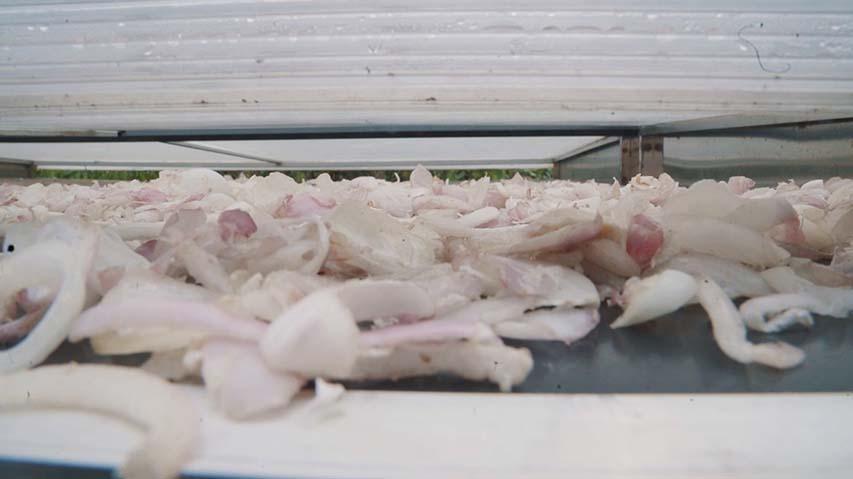
Onion slices are dried in the solar dehydrator for four hours.
Its products are now used in over a million meals daily, and it is looking to grow the business with mentorship from DBS Foundation.
“In every other (Indian) state, and even every other Third World country … there are also the same issues,” said co-founder Ashwin Pawade, 33. “Their produce goes to waste because of a lack of processing.
“The scale is huge, and that’s how the potential for impact is also huge.”
PEELING BACK THE LAYERS
One country that sees a lot of food loss in the traditional supply chain is Indonesia. Here, fresh produce passes through several layers, from farmers to village traders to wholesalers to distributors and finally to retailers.
Food is passed from hand to hand and squashed into trucks.
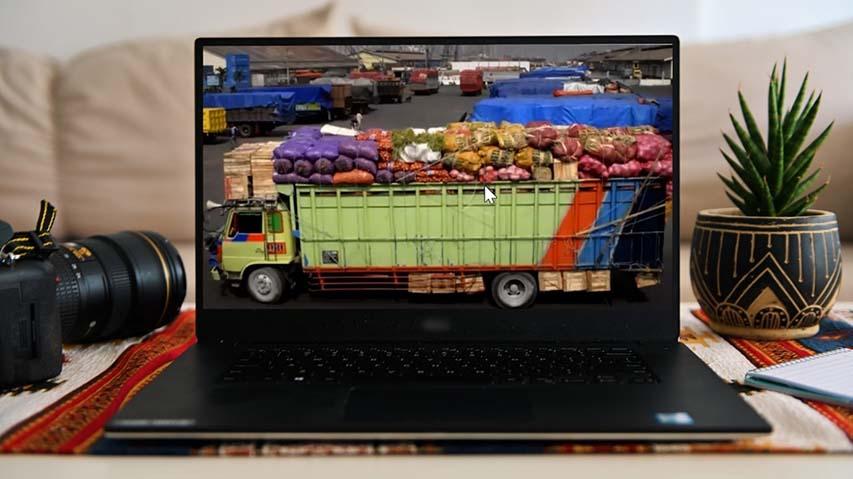
An example of the way some fruits and vegetables are transported in Indonesia, leading to damage.
“(The middlemen) pack 60kg of fruits in wooden boxes,” said Firdaus. “If someone picks up 60kg of fruits in a wooden box, they’d pick it up slowly, but they’d put it down very fast.”
Not only is damage caused by poor handling such as this, but also the transport of food can span a few days, which means more time without proper storage.
“It’s a fragmented sector, and most of the players are traditional, and they don’t have this cold storage,” said Pamitra Wineka, the president of agri-tech start-up TaniHub Group.
“This is basically why … middlemen always take quite a big mark-up — because they also lose a certain amount.”
His solution is to shorten the supply chain. In 2016, he and his co-founders set-up their company to help farmers sell fresh produce through its business-to-business e-commerce platform, TaniHub.

Pamitra Wineka.
It has five distribution hubs in Bandung, Bogor, Surabaya and Yogyakarta on the island of Java and in Bali. Goods go straight from the farms to these hubs, where they are sorted, and then to customers.
“We can transport the goods as soon as possible,” said Wineka. “(Customers) get their vegetables in a fresh condition, and we also don’t need to compensate for … waste shrinkage.”
TaniHub’s warehouses are equipped with cold storage facilities, with different temperatures suitable for tropical fruits and that are much lower, for example around eight degrees Celsius for leafy vegetables.
To improve productivity, the company built a packing and processing centre last year in Malang, East Java, where machines are used to wash, dry, wax and sort fruits.
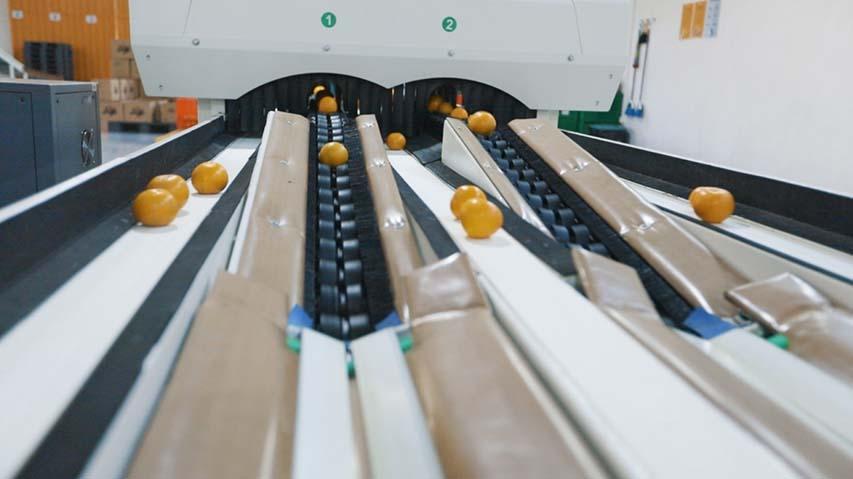
One of the machines in the packing and processing centre.
With minimal human touch, there is even less poor handling, and the processing time is also reduced.
“Your hands sometimes produce sweat, right? And it would ruin the quality of the goods,” said Vincentius Sariyo, the director of TaniSupply, the company’s supply chain services unit.
“(The sorting camera) can take around 30 pictures of each fruit to see the blemishes … If there’s very damaged skin, it would go back and be re-sorted.”
The company still helps farmers to sell “ugly” fruits, by finding willing takers and thus reducing food waste further.
Food-maker Malang Strudel, for example, does not choose its apples based on the smoothness of the skin. “We want fresh fruits. The fresh fruits have to also be delivered on time,” said chief executive officer Budi Sudarmono.
“The waste produced (before working with TaniHub) was around 10 to 15 per cent, but now there’s no more waste. The apples that we receive are good-quality apples. They’re all ready for production on our side.”
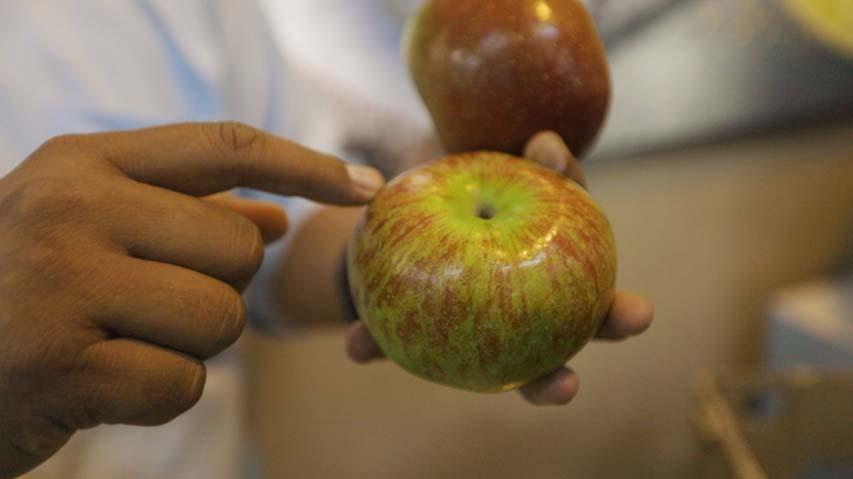
A good-quality apple for Malang Strudel's purposes.
A good-quality apple for Malang Strudel's purposes.
TaniHub also helps farmers by encouraging them to adopt best practices. “We tell them, ‘Look, if you pile up (the produce), this is your rejection rate … (which) in the end will also lower the value of your product,’” said Sariyo.
“If you, for example, divide (the transport) into two trips … it means that there’s more chance for (you) to sell more.”
Food spoilage is not the only major issue, however, in long supply chains. Small-scale farmers have little to no contact with consumers, so they do not know how much to produce to match market demand.
For many of them, like Totok Harianto from Malang regency, that sometimes led to overproduction — and food waste.
During the year-end wet season, for example, he usually found that 40 to 50 per cent of his supply of pisang mas (a banana variety) “wasn’t absorbed by the market”.
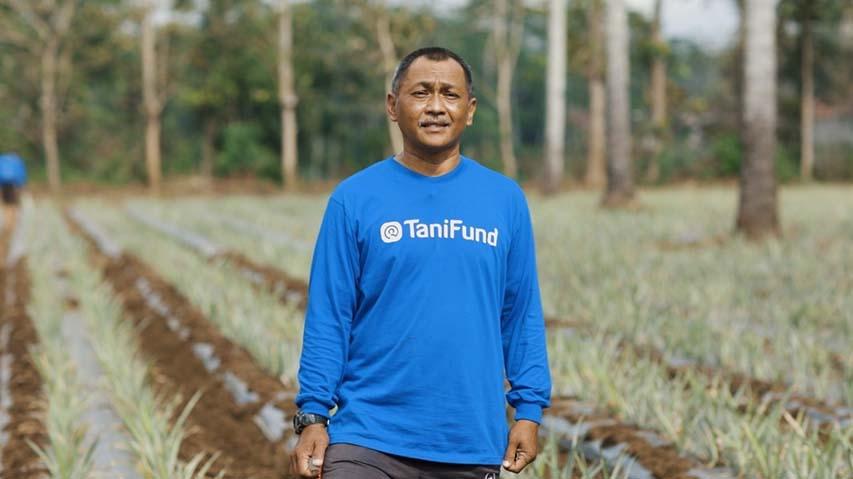
Totok Harianto.
“It’s really a waste because the quality was still good,” said the 43-year-old.
Sariyo has seen some farmers even throw their crops into the river. “They’re frustrated,” said the 45-year-old. “They say, ‘If I do the harvesting, the harvest cost is higher than my product (value).’”
That is why TaniHub is bridging the gap between farmers and consumers by advising farmers on what, and how much, the market wants so they can better plan their harvests.
“In helping to reduce food loss, of course we need to start … from the planning itself,” said Sariyo. “After working with us, it’s proven that they can significantly reduce their food loss or waste (by) more than 95 per cent.”
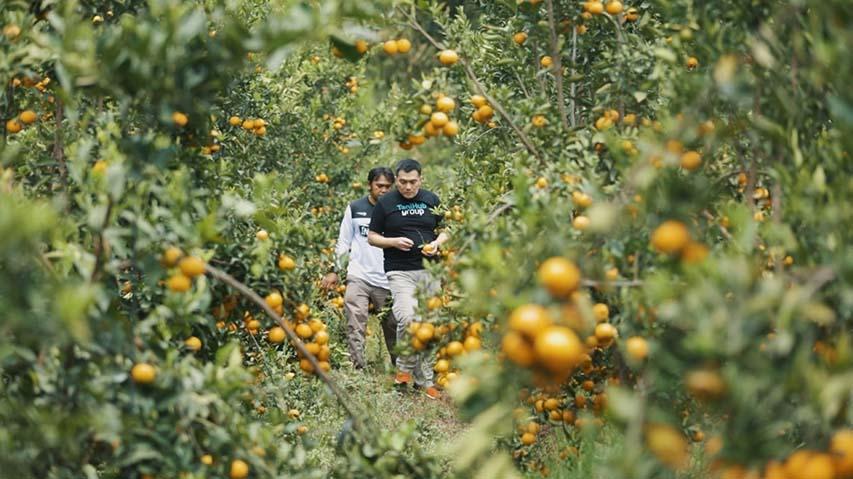
An orange farmer follows Vincentius Sariyo, who helps him to decide when and how much to harvest.
Harianto has seen instances of oversupply “greatly decreasing” on his part, and appreciates the complementary role played by TaniHub, which has partnered more than 30,000 smallholder farmers.
With market clarity provided by the company, he also agreed to grow Honi pineapples recently because this variety is more in demand. “I hope that by planting this new variety … we’ll be able to enjoy higher profits,” he said.
HIGH-TECH SOLUTIONS FROM SINGAPORE
So when it comes to reducing food supply leakages, it is clear that innovative technology — to prevent food from going bad quickly — and minimising the number of stages in the supply chain are two things that make a difference.
But the solutions can be found not just in nations with a vast agrarian sector. A country like Singapore can play a part too.
For example, scientists at the Singapore-MIT Alliance for Research and Technology are taking silk from silkworm cocoons and turning them into a coating that stops food from rotting. The material is both water-resistant and edible.
“It makes a barrier … that’s very thin, and it’s transparent. And the barrier is very good at keeping … micro-organisms out,” said Benedetto Marelli from the Massachusetts Institute of Technology and its research enterprise in Singapore.
“It lasts until you wash it away or you’ve eaten (the food).”
It works “very well” on avocado, cherries, fish fillet, mango, meat and zucchini, according to the assistant professor. “We know it works on strawberries and bananas from the early experiments. It works very well on leafy greens as well.”

Professor Benedetto Marelli is with the Singapore-MIT Alliance for Research and Technology.
He added: “This technology can have a big impact … in the region, (where) you don’t have the cold chain … while (food) passes from one hand to the other or when it’s exposed to bad weather.”
His team is not the only one thinking about the possibilities for reducing loss in the food supply chain.
Another group of scientists at the National University of Singapore (NUS) have developed a process for turning pineapple leaves into a low-cost aerogel that, when treated with active carbon powder, can keep food from rotting for at least two weeks.
“This can be used for preserving vegetables and fruits during transportation,” pointed out NUS associate professor Duong Hai Minh.
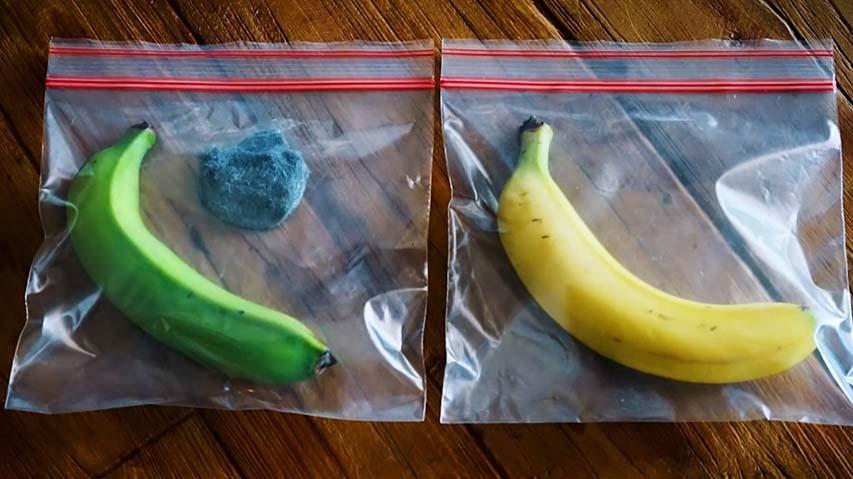
The aerogel keeps the banana on the left from ripening quickly.
Besides these types of technologies, consumers and food and beverage businesses can also help by buying locally and, where possible, sourcing produce from farmers directly or from organisations that support them and have good practices, such as TaniHub and S4S, which is a DBS Foundation grant awardee.
It could go a long way towards changing the food industry for the better.
This article by CNA Insider was done in collaboration with DBS.
DBS Foundation provides holistic support to businesses of impact, including the flagship Social Enterprise Grant Programme. Applications for 2021 are open, click here to find out more.
Learn more about how you can continue your journey #TowardsZeroFoodWaste.
Find out more about DBS’ other partnerships and initiatives #TowardsZeroFoodWaste.